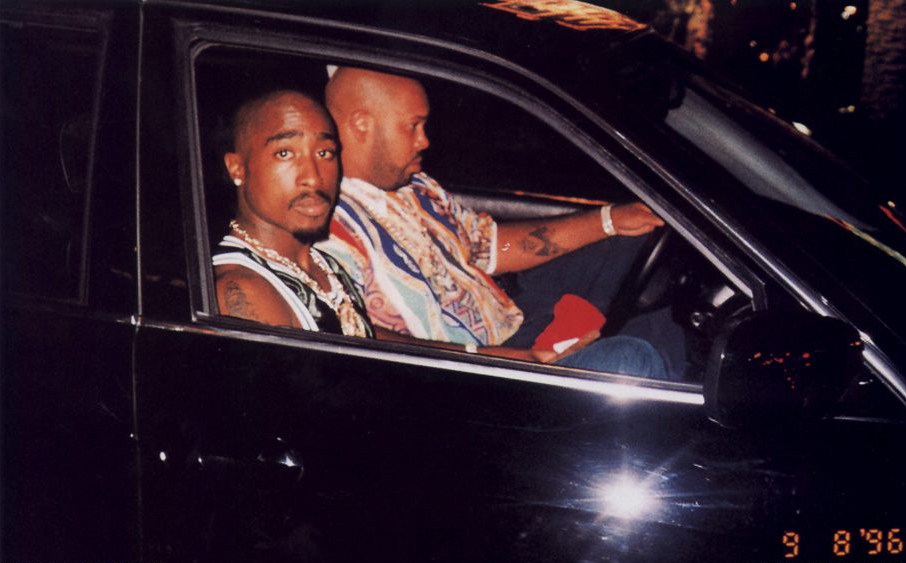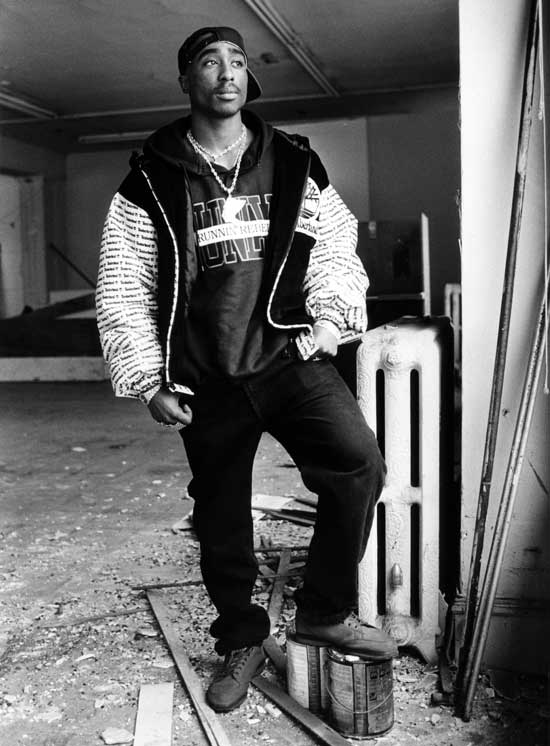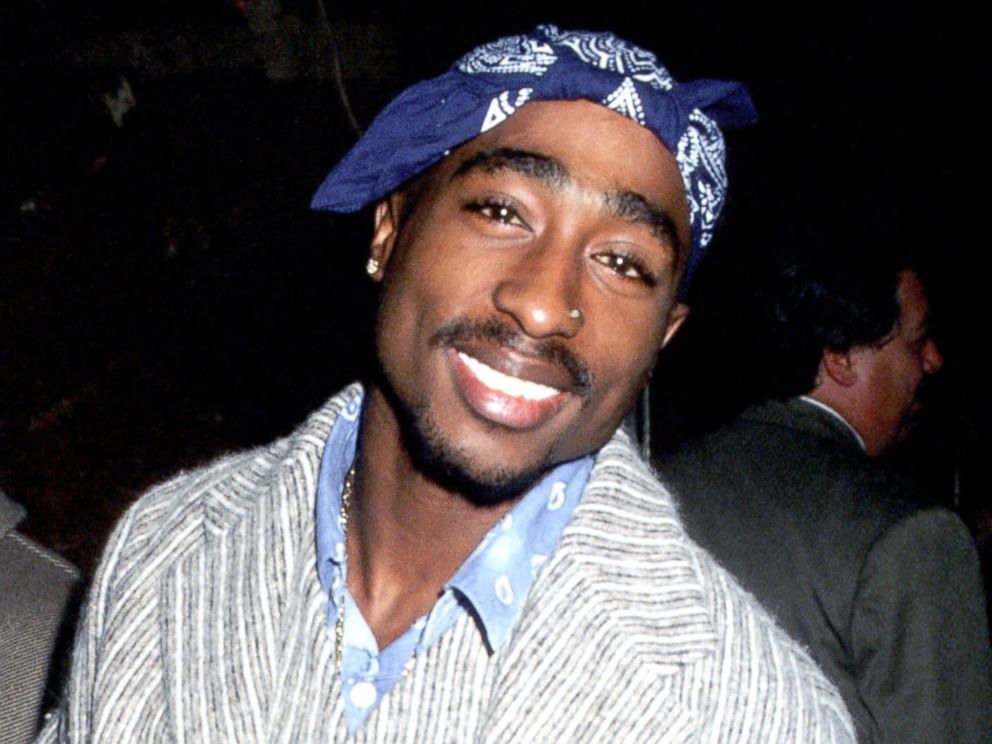By: Zachary Draves
He was the rose that grew from concrete who lived the thug life and became a one-man revolution through rapping, acting, and uncompromising truth-telling.
25 years after his untimely death, his impact is still being felt in all sectors of society as if he had never left us.
His name was Tupac Amaru Shakur.

(Courtesy: Rolling Stone)
It is unfathomable to comprehend the fact that it has been exactly 25 years since Tupac was taken from us at the tender age of 25.
On the night of September 7, 1996, Tupac, Death Row Records CEO Suge Knight, and their entourage were in attendance at the Mike Tyson-Bruce Seldon boxing match at the MGM Grand hotel in Las Vegas.
/cdn.vox-cdn.com/uploads/chorus_image/image/68511145/Mike_Tupac.0.jpg)
(Courtesy: Revolt TV)
Not too long after Tyson, a close friend of Tupac’s, knocked out Seldon in the first round, Tupac and Suge were headed down the Las Vegas strip in Suge’s black BMW to a party when at a stoplight, gunshots rang out and Tupac was hit four times in the chest.

(Courtesy: Black Sports Online)
He was taken to the UNLV Medical Center where he was in a coma for six days and on September 13, he was gone.

(Courtesy: Amazon.com)
The identity of the killer is still a mystery to this day.
There is not enough time in the world to sum up the legacy of this man because that legacy is still continuing and will only be strengthened by a younger generation keeping Pac’s spirit alive in various capacities (music streaming, merchandising, activism, etc.) and learning to incorporate his philosophies into their worldviews.
But one aspect of his legacy that can’t be overlooked is the impact he had on the world of sports and on black athletes in particular.
Tupac and Black Athletes
Tupac came of age and rose to prominence at a time when unique social, political, and economic circumstances were hitting black and brown communities hard and where the old stereotypes about the dangerous black man were heightened by the broader culture under the banner of “Morning of America”

(Courtesy: Ebony)
At the same time, there was a burgeoning cultural movement hitting the hardwood and the streets that was a direct counterattack to these ills.
In the 1980s, as the War on Drugs exploded, income inequality was growing, deindustrialization ran amok, and civil rights gains were being rolled back, what came out of that as a form of cultural rebellion created by poor black and brown young people in the Bronx, New York that came be known as Hip Hop.
Hip Hop became the outlet for many who felt abandoned and ignored where critiques of institutional and cultural power were expressed through lyrics, rapping, break dancing, and DJing.
These new cultural forces scared off dominant mainstream society but was embraced by many including black athletes.
The first team to embrace Hip Hop culture as a means of self-expression and identity through sport was John Thompson’s Georgetown Men’s Basketball team who became the 1984 NCAA champs. The Hoyas aggressive style of play, wearing dark blue Nike shoes, which was not seen at that time, and them being an all-black team led by an outspoken black head coach didn’t find much praise in many traditional white communities.
The Hoyas were perceived as “thugs” which became a new loaded and coded word. They can’t use the N-word anymore, so they tried something else that can be seen as less offensive by some, but reinforced the same degradation as the N-word did.
At the same time, the NBA had a brand new rookie from North Carolina named Michael Jordan who was drafted by the Chicago Bulls in ‘84. His style of play mirrored that of the players from the 1970’s and his choice of footwear also sparked a cultural revolution.
The Air Jordan, created by Nike, was first introduced in 1985. The first pair were black shoes with red features.
This violated the NBA’s rule on footwear that pairs of sneakers had to be white or have some white in them and as a result, they banned the Air Jordan.
The NBA at that time most likely couldn’t come to terms with the fact that black style was becoming mainstream and that their league would be composed of black players who embraced the politics of cultural pride and so they tried everything they could to not lose white fans through these kinds of policies.
In the 1990’s, Hip Hop started to become more popular than ever and the fusion between hip hop culture and sports was starting to become more visible.
On the basketball court, the Runnin Rebels of UNLV that featured players like Larry Johnson, Greg Anthony, and Stacey Augman mirrored Georgetown in that they were a predominately black team that embraced a style of play that came from the inner cities that had a Hip Hop style and Pac himself took notice as he sported a UNLV sweatshirt in the video for his song “Brenda’s Got a Baby” off his 1991 album 2pacalypse Now and wearing a rebels t-shirt on a talk show.

(Courtesy: Pinterest)

(Courtesy: Boston University)
Even though they won the NCAA title in 1990, they were also called “thugs” by the mainstream press and their intelligence was questioned. When they lost their chance to repeat as NCAA champions in 1991 to Duke led by their star Christian Laettner, who happened to be white, many college sports purists supported the victory of a team who embraced a style that was appropriate and traditional over a team that embraced a style that was seen as “in your face” and “thuggish”. The racial component was there.
A year later, a group of five freshmen stepped onto the campus of Michigan; Chris Webber, Jalen Rose, Juwan Howard, Jimmy King, and Ray Jackson. They become known as the “Fab Five”. They became famous for wearing baggy shorts, black shoes, black socks, and playing a style of play that paralleled the hip-hop streetball style. They were subjected to relentless criticism by the dominant society. They received racist letters from Michigan alumni. They were told that they didn’t represent what college sports should be about. They were judged because they listened to Hip Hop.
They listened to Pac, EPMD, Naughty by Nature, Public Enemy, Ice Cube, Dr. Dre, and others.
Mahmoud Abul Rauf, formerly known as Chris Jackson, was one of the NBA’s best-known shooters playing for the Denver Nuggets.
He converted to Islam and became famous for not standing for the National Anthem and would later pray in the traditional Muslim style of prayer during the anthem as a form of compromise with the league.
This was at a particular time when many in the hip hop community including many athletes embraced the religion of Islam, especially as it relates to black pride. The reaction was swift and he was eventually blacklisted from the league.
This was an attack on a black athlete who embraced the religion of Islam that was viciously judged and still is to this day.
Above the Rim
Tupac was right in the middle of this cultural renaissance and he was a model for black male athletes to have an edge and defiance to them in the face of unrelenting policing and scrutiny from the broader mainstream society.
He and they took the term “thug” and made it into something that was about empowerment.

(Courtesy: The Undefeated)
“Tupac represented an uncompromising attitude” said Jesse Washington, writer at ESPN’s The Undefeated and former writer at Vibe Magazine.
“He represented an attitude in sports that took time to breakthrough.”
That alliance between Pac and black athletes of this era was solidified by his role as Birdie in the groundbreaking basketball movie Above the Rim released in 1994.

(Courtesy: Amazon.com)
Pac’s character is a drug dealer in New York who’s trying to force the main character and high school basketball standout Kyle Lee Watson played by Duane Martin into joining with him and forgo his scholarship to Georgetown.

(Courtesy: IMDB)
What was significant about this movie was that it was truly a basketball movie in every sense of the word meaning that the actors in the film were actual ballers.
Duane Martin and co-star Leon Robinson who played the character Thomas “Shep” Sheppard had a basketball pedigree to their name.
Martin played while at New York University and signed a non-guaranteed contract with the New York Knicks in 1989 before being cut.
“It is a top three basketball film and maybe the best film ever” said Washington.
“Most authentic basketball movie and changed the course of basketball movies.”
Tupac and AI
In the years after his death, the rise of another black athlete who took on the Tupac persona became a cultural focal point.
From the early 2000’s until the present, we saw a new surge in the policing of black athlete’s fashion and style.
In the NBA, we saw the presence of Allen Iverson, who solidified the relationships between basketball and hip hop in every way imaginable.
AI had cornrows, wore do-rags, wore tattoos, wore hip-hop clothing, associated with rappers like Jadakiss, and openly challenged respectability politics.
The NBA was coming out of the Michael Jordan era and was looking to fill that void, which was impossible.
They knew that AI wasn’t what they had in mind. Michael was perceived as perfection by NBA standards.
He was a black male athlete who crossed over into mainstream society in a way never before seen by a black athlete. He was also apolitical and didn’t rock the boat. He set the example of putting brand and image before social and political beliefs.
AI on the other hand was not MJ.
He redefined the role of the point guard, but he would never be mentioned in the same sentence as Michael because of what he represents or what they perceived he represented.
Contrary to popular belief, the people who knew AI the best recognize how generous and humble he was and that he was being his authentic self.
The league tried to do everything they could to make him less of himself such as erasing his tattoos on the cover of a magazine to make him appear less menacing.
AI was able to crossover, no pun intended, just for being who he was and the fans embraced that no matter how much the league and media tried to discredit and suppress him.
If anything, AI was Tupac in basketball shorts and a long elbow sleeve and Tupac was AI with a microphone and pen and pad.
They showed America that the urban black male is here to stay and no matter what actions are taken, the urban black male is going be heard one way or another.
Their connection can be explained in this video of AI highlights set against the backdrop of “Me Against the World” off of the 1995 album of the same title.

(Courtesy: Youtube)
In the End
It is clear that Tupac’s impact goes well beyond the music and silver screen.
We can only imagine what he could have been had he lived but I’ll let my man Jesse have the final say.
“Pac would have changed and evolved as all the great artists have” he said.
“He was talented, passionate, and a revolutionary.”
“A brilliant young brother representative of an enormous amount of knowledge and talent.”
Rest in Power Pac.


 NFL
NFL





